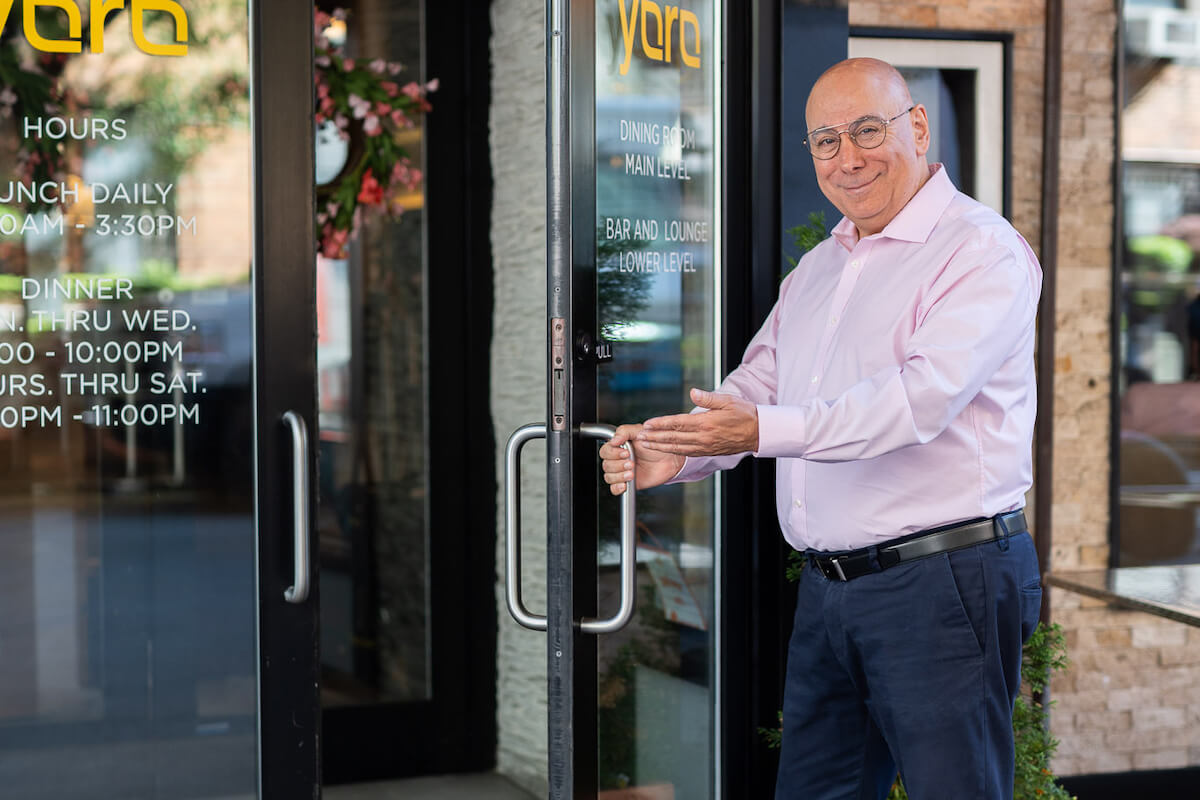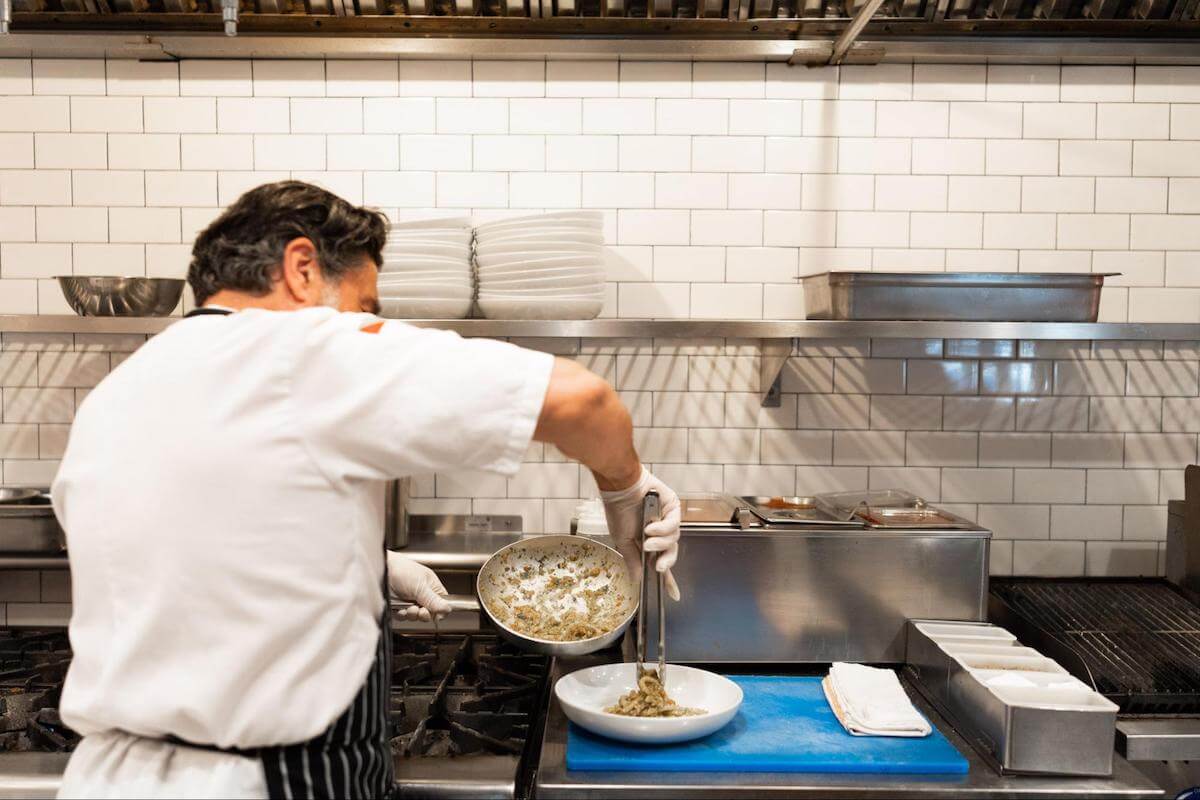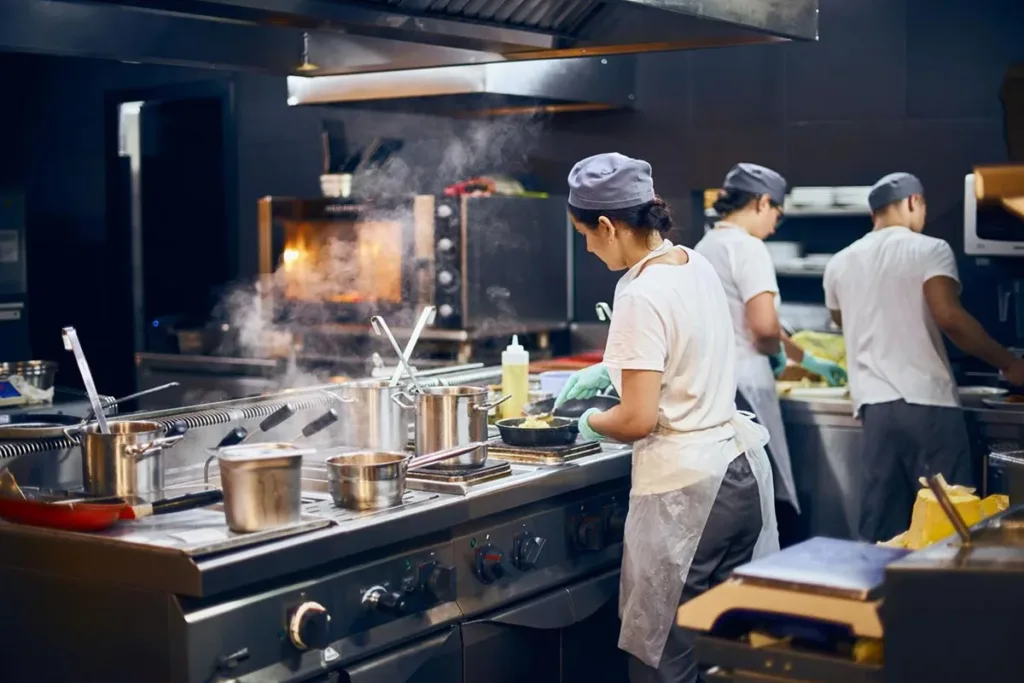How much does it cost to open a restaurant? 10 key areas
Skip the article and turn takeaways into action by scheduling a call with our team.
If you were to ask the question “How much does it cost to open a restaurant?” to 100 experienced restaurateurs, you’d likely get 100 different answers. Opening a new restaurant is a different journey every time, for new and experienced restaurant owners alike.
From leasing or purchasing real estate to furnishing dining rooms, selecting kitchen equipment, and obtaining licenses, each venture has such unique needs that it’s hard to talk about startup costs for the “average restaurant.” Opening costs for a high-end New York City steakhouse are understandably greater than those for a small-town food truck.
Restaurant owners and prospective restaurant owners should understand the major categories of restaurant startup costs, and what they amount to in their city. New restaurants require high upfront costs, so budgeting for these major line items in addition to food costs, labor costs, and other operating costs will help you stay a step ahead financially in the restaurant business.
So how much does it cost to open a restaurant? Before you can think about your grand opening, be sure to factor these startup costs into your restaurant business plan.
How much does it cost to open a restaurant?
The answer to this question varies significantly, depending on your restaurant type, location, square footage, menu items, staffing, and a nearly endless list of other factors. One study set the average restaurant startup cost at $375,000, ranging from $175,000 on the low end up to $750,000 and beyond. Other data suggests an even broader range, anywhere from $95,000 to $2 million to build a restaurant.
We’ll break the overall startup cost down into 10 categories so you’ll know better what to expect.
1. Real estate

Securing a building is a critical step to opening a new restaurant, and will be one of the biggest factors to consider on the path to profitability. Before leasing a commercial space and sending in a security deposit, however, think about your business model and the type of building you’ll likely need.
Leasing vs. buying
The very first decision you’ll need to make is whether to lease or purchase an already-existing building or build from scratch. Construction costs can eat up anywhere from 36–73% of opening costs, so this is a big decision that can mean the difference between tens of thousands or hundreds of thousands (or even millions) of dollars spent.
Obviously, building from scratch will be significantly more expensive than taking over an existing building. On the other hand, if you’re opening with lots of operating capital, a brand-new building offers you the opportunity to design it exactly as you see fit, with all the bells and whistles appropriate to your restaurant concept.
Those on a tighter budget are better off leasing an existing building. And here again a restaurateur will encounter choices—specifically, whether to renovate a building that wasn’t originally a restaurant or to find and take over a building that was previously a restaurant.
Restaurateurs who are building from the ground up can expect to pay around $178 per square foot for their location, whereas those who lease will see lower expenses, around $159 per square foot.
What to look for in a lease
When leasing a space for your new restaurant, try to target a commercial space with existing restaurant infrastructure. Even if the price per square foot is a bit higher, not having to completely retrofit a building will lower your renovation costs. If you can find a spot with kitchen equipment and a partial dining room setup left by a previous tenant, that would make the deal even sweeter.
Location considerations
Location is everything in real estate, regardless of whether or not you’re in the restaurant business. Better locations that attract greater foot traffic will come at a naturally higher price per square foot, but not all new restaurants necessarily need such prime real estate. If you’re looking to start a small full-service restaurant, a huge crowd might become overwhelming. Alternatively, many quick-service restaurants that rely more on takeout and delivery than dine-in don’t necessarily need that sort of prime location.
2. Kitchen equipment and the dining room setup

One of the biggest restaurant startup costs comes from building out a proper restaurant floor plan. Equipping your back-of-house with the necessary kitchen equipment and your front-of-house with a well-designed dining room requires a series of upfront costs that should naturally align with your business model.
Kitchen equipment
When selecting kitchen equipment, first think about the tools and appliances you need to properly prepare each of your menu items, as well as to store ingredients. Consider the following for your kitchen equipment list:
- Refrigeration for bulk ingredients as well as prepped ingredients
- Shelving for dry storage
- Tables for prep as well as line assembly
- A hood for ventilation
- Three-compartment sinks for food prep and dishwashing
- Range, oven, fryer, and other cooking equipment, depending on whether your menu items require these preparation methods
- A freezer, walk-in or standalone, for long-term storage
- A dishwasher that meets your restaurant’s capacity needs
Kitchen equipment can quickly balloon a restaurant’s expenditures, averaging anywhere from $40,000 to almost $200,000, and overspending in this area can lead to further budgetary constraints. A good way to cut down on these expenses is to buy high-quality secondhand equipment, for example, from restaurants that have gone out of business.
It’s common to get major items like fridges, ovens, and more at restaurant auctions. These auctions can be online or in-person. It may be wise to get larger, more expensive items at in-person auctions since you can check out the quality of the equipment with your own eyes. Smaller or less expensive items are less of a risk if purchased at online auctions.
Also consider leasing equipment rather than outright purchasing it to keep costs down. In many cases, a lease will come with a service agreement that limits a restaurateur’s out-of-pocket expenses in case the equipment needs repair.
Dining room setup
When outfitting your dining room, think about the ambiance needed to justify your pricing. Higher-end full-service restaurants will naturally have higher average costs around dining room furniture and décor than more casual quick-service restaurants. Of course, if you’re starting a food truck or a takeout and delivery-only ghost kitchen, then there’s no need to worry about these costs all that much.
All other restaurant business owners should stock their dining room with:
- Booths, tables, and chairs: Smaller tables allow for much more dynamic seating arrangements, though booths are suitable for higher-end venues.
- Artwork: Select tasteful décor that adds visual appeal to the dining experience and matches your brand colors.
- Lighting: Set a proper mood for your patrons.
- Sound: If you’re planning to have background music or live entertainment, make sure that sound flows freely across your dining room and patio.
Other options depend on your location. If you have a patio or outdoor area, you’ll want to ensure it’s well-lit and landscaped. Further, if your establishment intends to have regular entertainment like live music, you’ll want to ensure you have a well-equipped stage.
Overall, you can expect to spend $10,000 to $50,000 or more on your dining room or front-of-house setup—all depending how many seats you have and how many bells and whistles you’re looking to add. If you’re going bare-bones or have a very small establishment, you may be able to squeak by for under $10,000.
3. Outdoor elements

The outside of your restaurant should make customers want to come inside. This means dolling up the exterior with high-quality signage, landscaping, and an overall look that expresses your brand.
Restaurants with outdoor areas should make the most of them. Whether this is in the form of an outdoor patio, a rooftop, or an area adjacent to pedestrians, you’ll want to ensure the area is comfortable and one of the crown jewels of your restaurant.
Realistically, your outdoor elements can cost somewhere from $5,000–15,000.
4. Licenses and permits
Any food service business requires a series of licenses and permits to operate. These papers can take weeks to months to obtain, and they can cost anywhere from a few hundred to hundreds of thousands of dollars, depending on your location and occupancy. New restaurants should plan to get the following licenses and permits in a timely manner:
- Business license, which is required for any business to operate legally in the U.S. If you plan to sell alcohol, you’ll need both a federal and state business license. If not, you may just need a state business license
- Seller’s permit, which identifies your business as a collector of sales tax
- Certificate of occupancy, which verifies that your building is safe and suitable for business
- Resale permit, which will save you from paying double sales tax on purchases that you’re in turn selling to customers. This will ultimately decrease your food costs and improve your menu item margins
- Health permits, which verify that your facility and operations have met the necessary standards for public food and drink consumption
- Food service license, which allows you to operate as a food service business. You’ll also need to ensure that everyone on staff involved with the preparing or storing of food has a valid food handler’s certification
- Sign permit, which verifies that your signage abides by local guidelines
- Liquor license, which allows your restaurant to sell alcohol. One type of liquor license allows you to sell beer and wine only, while a full liquor license will let you stock a full bar. Liquor licenses are often the most difficult and expensive to obtain
Note that the licenses and permits a restaurant needs vary by state, and you must check your local laws to determine all the boxes you need to tick. On average, expect to budget at least $10,000 for permits—more if you live in a permit-heavy location.
5. Staffing

Labor costs generally make up 25–35% of a restaurant’s operating expenses, but it’s an essential expense because proper staffing will allow you to meet customer demand without eating into your profitability. Different restaurant business models require different staffing structures, but here’s a template for staffing a high-occupancy, full-service restaurant.
Front-of-house staff:
- General manager, who oversees big-picture responsibilities to keep your restaurant financially healthy and operationally efficient
- Managers, who handle day-to-day operations and ensure staff are performing to the best of their abilities
- Servers, who take orders and act as a customer’s main point of contact
- Bussers, who turn tables, bring water, and tend to other small service tasks
- Hosts, who manage reservations and waitlists and serve as a customer’s first point of contact
Back-of-house staff:
- Executive chef, who develops your menu and trains team members on proper menu item preparation and execution
- Sous chefs, who oversee different sections of the kitchen
- Line cooks, who handle fundamental menu item construction
- Prep cooks, who prepare ingredients prior to service
- Dishwashers, who clean dishware, glassware, silverware, and cooking tools
- Bartenders, to prepare drinks
- Barbacks, who provide the resources necessary for bartenders to serve drinks efficiently
6. Support capital
As the saying goes, there are known knowns, known unknowns, and unknown unknowns. It’s the unknown unknowns that get new restaurant owners into trouble. So when you’re running your own restaurant, you need to expect the unexpected. That means having support capital put away.
You’ll need liquid cash ready for all sorts of scenarios you may not have envisioned, from broken equipment to lower-than-anticipated sales or higher-than-expected operating costs. There’s no upper limit to how much support capital you’ll need—the more, the better. Bear in mind that underfunding is one of the main reasons new restaurants and small businesses fail.
We’d recommend having at least tens of thousands in support capital. Having access to a high-limit credit card or other line of credit is also advisable for restaurant entrepreneurs, even if you never have to use it.
7. Marketing

Naturally, setting up a restaurant means you’ll need to get the word out. Marketing costs settle in comfortably at around 3–6% of restaurant revenue. So imagine your anticipated revenue a few months down the line, and look for around 6% of that to nail down your initial marketing budget, which will need to be high to begin with so your restaurant opens with a bang.
Restaurant marketing is its own topic in full, but here are some things you’ll need to keep in mind when planning your marketing investment:
- A website: You’ll want a well-designed, easy-to-use website for your restaurant. It should feature, at minimum, your menu, nice-looking photos of your food and restaurant, your opening hours and location, and contact information.
- Social media accounts: While social media accounts are free, social media managers are not. You’ll want to decide if you need a social media manager or if you or one of your existing staff members will take charge of the job.
- Advertising: Advertising can be accomplished via social media; via Yelp Connect and Yelp Ads; or through a number of other mediums like streaming, YouTube, or podcast ads. Advertising via search is a dangerous choice, as nearly 70-80% of sponsored search results are ignored. Keep in mind that posts that include videos on social media are shared 1,200% more than those with text and links combined.
8. Food costs
Of course, when your doors open to customers, you’ll need to have food to serve them. And since you’re making a first impression, you’ll want to ensure you have everything on the menu available.
Just how much you spend on your initial food costs depends on many variables: the type of restaurant you operate, how many menu items you offer, how many seats you have, and so on. While fresh ingredients need to be purchased often, you also need to stock up on essentials like cooking oil, spices, and canned goods, as well as dry staples like rice, beans, and flour.
Expect to spend at least several thousand dollars on this initial purchase, especially considering food price inflation across the board.
To keep food costs down, consider limiting your menu, especially in the beginning. By maintaining an inventory and keeping food fresh, you can ensure quality meals, and this gives you room to grow and increase your offerings in the future.
9. Often-overlooked: Insurance and utilities
With all the other important expenses like staffing, equipment, the cost of a building or renovation, and inventory purchases, it can be easy to overlook must-haves like insurance and utilities. Yet a restaurant simply can’t operate without them, so they must be factored into any cost estimate.
Restaurant insurance doesn’t technically exist as its own category—rather, restaurants usually end up purchasing an insurance package from a broker. This will cover categories like:
- General liability insurance
- Commercial property insurance
- Workers’ compensation insurance
Typically, restaurants will pay between $1,000 to $10,000 per year for insurance, though large urban locations like New York City or Los Angeles have higher premiums, and rural locations will be cheaper.
Utilities are clearly a must—no restaurant can operate without electricity and water. Restaurants between 4,000–4,500 square feet in size can expect to pay between $1,000–1,200 per month for utilities.
10. Restaurant technology

Technology is a necessary expense in the restaurant industry, automating many otherwise time-consuming tasks to produce significant labor cost savings. Restaurant owners will want to factor the following technology investments into their startup costs.
- Point of sale system: More commonly known as a POS system, this essential technology manages dining room orders, handles payment processing, tracks sales, and supports inventory management.
- Front-of-house (FOH) system: FOH systems manage reservations and waitlists, as well as link up to your POS system to provide data and analytics on your sales and customers.
- Restaurant marketing software: Posting to social media, advertising special events, and promoting new menu items can be tedious and expensive, but you can invest in technology to streamline these tasks, as well as to get your restaurant in front of the right people.
- Mobile apps: Even small restaurants can benefit from a mobile app these days, whether it’s for delivery, takeout, or a loyalty program. Worth noting is that 71% of customers reported preferring to order takeout or delivery from a proprietary app. Custom app development can cost between $2,000–8,000, but of course the sky is the limit when it comes to features.
- Software subscriptions: These can add up, especially if you’re using software that has monthly costs and requires you to pay extra for specific features. To keep costs down, sign up for annual subscriptions wherever possible and cut features you don’t use to keep your restaurant expenses down.
Start off with the best restaurant technology
If you previously wondered how much does it cost to open a restaurant, you’ve now seen that the costs can vary considerably, with many factors to consider. Restaurants are capital-intensive projects, where smart spending is key to long-term profitability. And when it comes to restaurant technology, Yelp’s full front-of-house system is a no-brainer.
Control reservations, waitlists, and table management all on one platform with Yelp Guest Manager, and expand your business reach with Yelp Connect. That reach can be enormous, too: Yelp reaches 8x more consumers online than OpenTable.
Want to see how it all works? Curious if it’s right for you? Reach out to us for a free demo.